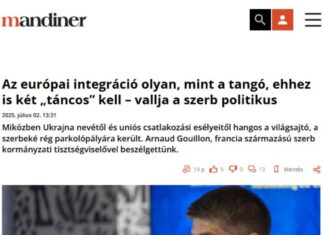On July 8th, 2023, the Ukrainian Ministry of Defense published a video on Twitter (shown below). The accompanying text clearly outlined the video’s intended messages: The War in Ukraine is no action film or computer simulation. It’s a real war, with real stakes. The text concludes with the statement “And we very much know what we are doing.” This video was published at a time when digital publics across the world eagerly await news of Ukraine’s successful counter-offensive. Yet no such news has arrived. The Ukrainian video is a direct response to these unmet, great expectations as it states “Look, we know you’re impatient, but this our fight, it isn’t make-believe, and we know what we’re doing”. Fittingly, the video’s soundtrack repeats the words “Hold on”.
This video is important as it highlights the complex interplay between digital war time messaging, societal processes, and reality. The War in Ukraine is representative of the feeling of uncertainty now felt across the world given the erosion of a shared sense of reality. The Russia-Ukraine War plays out very differently in different social media feeds. In the reality of one social media user, Ukraine has killed more than 200,000 Russian soldiers while inflicting heavy losses on the Russian military destroying large numbers of tanks and armored vehicles. Yet in the social media reality of another user, Russia has made significant advances and has repealed the so-called counter-offensive. Moreover, Russia has been able to repel Ukrainian soldiers now armed with finest weapons in the West. Still in other users’ social media reality, the War isn’t being fought at all.
A world of multiple and conflicting realities is one that is hard to fathom, especially when social media feeds contradict news reports. If Ukraine is gaining on Russia, why is one’s feed filled with images of Ukrainian losses and Russian gains? Reality becomes even more fractured when traditional media reports contradict one another. Prior to the beginning of the Russia-Ukraine War, reputable news sites argued that Russia had amassed either 50,000 soldiers on Ukraine’s borders or 80,000 soldiers or 140,000 soldiers. Similarly, according to different reputable news sites, the Ukrainian counter-offensive is advancing as expected or is advancing slowly or hasn’t even begun yet.
Fractured and competing realities breed a longing for the past, for a bygone era in which there was supposedly one, shared reality. This nostalgic longing has most recently been exemplified in pop culture products such as Tops Gun 2 and the Netflix show Fubar. Both products offer a return to the 1980s, a seemingly more coherent period in which “good guys” fought “bad guys”. The world had clear and impenetrable borders between East and West, between America and Russia. It is only through nostalgic longing, and in particular longing for the 80s, that one can understand why Netflix recruited the aging Arnold Schwarzenegger as a new talent and have him star in the show Fubar or why Top Gun 2 grossed 1.5 billion dollars. Both products spoof the 1980s and ridicule its great “leading men” such as Schwarzenegger or Sylvester Stallone. Yet within this satire there is also an emotional component as for a few hours, the past is summoned to the present and the world makes sense again.
It is for this reason that the Ukrainian video begins with short clips from 1980s films such as Rambo and Predator, movies in which machismo “leading men” take out entire armies single handedly while leaving an astounding body count in their wake. The Ukrainian video could have begun with scenes from Saving Private Ryan or Fury or Black Hawk Down. Yet these films all deal with the complexity and price of war. 80’s films, on the other hand, ignored such complexities. Rambo and Predator celebrated war and fetishized weapons of war. 80s films did not have conflicted or fragile leading men, the kind whose conscience struggles to reconcile the price of killing other people.
The logic of 80s films was simple-the greater the body count, the greater the box office returns.
Notably, after the clips of Rambo and Predator, the Ukrainian film includes a short excerpt from Tropic Thunder, a film which satirizes 1980 war films. The excerpt chosen by Ukraine satirizes a scene from Platoon– a film directed by Oliver Stone dealing with the moral ambiguity of the Vietnam war and the price war exacts from soldiers. It is through the invocation of 1980s films and satires of such films that Ukraine tries to obtain an important diplomatic goal- reduce the complexity of the Russia Ukraine War. According to Ukraine, there are no multiple interpretations of this War, no conflicting realities, no competing facts but only one simple truth- “good guys” are fighting “bad guys”.
It should be mentioned that like 1980s films, the Ukrainian Ministry of Defense routinely fetishes war and weapons of war, as shown in the two tweets below. Embracing its inner Gordon Gekko, the Ukrainian Ministry of Defense asserts that War, for lack of a better word, is good. War works. And Ukraine’s War works better than most.
It is after the comparison with 80s films, and computer games, that the Ministry’s video changes tune. It suddenly states that this is a real War, not an imaginary one in which Stallone and Schwarzenegger save the day. The reality of this War is then depicted through a series of clips showing Ukrainian soldiers fighting on different fronts while advancing on the enemy on land, sea, and armored vehicles. Time and again the Ukrainian flag is hoisted suggesting that more and more territory is being liberated by Ukrainian soldiers, thus proving the video’s assertion- Ukraine’s army knows what it is doing.
Yet this reality is also manufactured. These are different clips from different times and locations taken and edited together. One scene did not really follow another. Time is not linear and while some clips are from battles others appear to be from training exercises or promotional videos. Moreover, viewers do not hear weapons of war, the howling of soldiers and the pain of the injured but only the upbeat soundtrack of “Hold On”.
It is at this point that viewers encounter an inescapable truth- that this video is also a doctored form of reality. The video’s goal is not to offer an actual update on the War or to document the War but rather to galvanize publics, to retain the support of social media users and to manage the brand of Ukraine’s Army- one which may have been tarnished by lack of news regarding the great counter-offensive. So, a video claiming to show a real war is, in itself, very unreal. It is, essentially, no different from Rambo and Predator. They are all consumer products used to commodify and sell war.
The only difference is that Ukraine resisted the urge to hire Schwarzenegger and end its film with Arnold promising Putin- I’ll be back!













